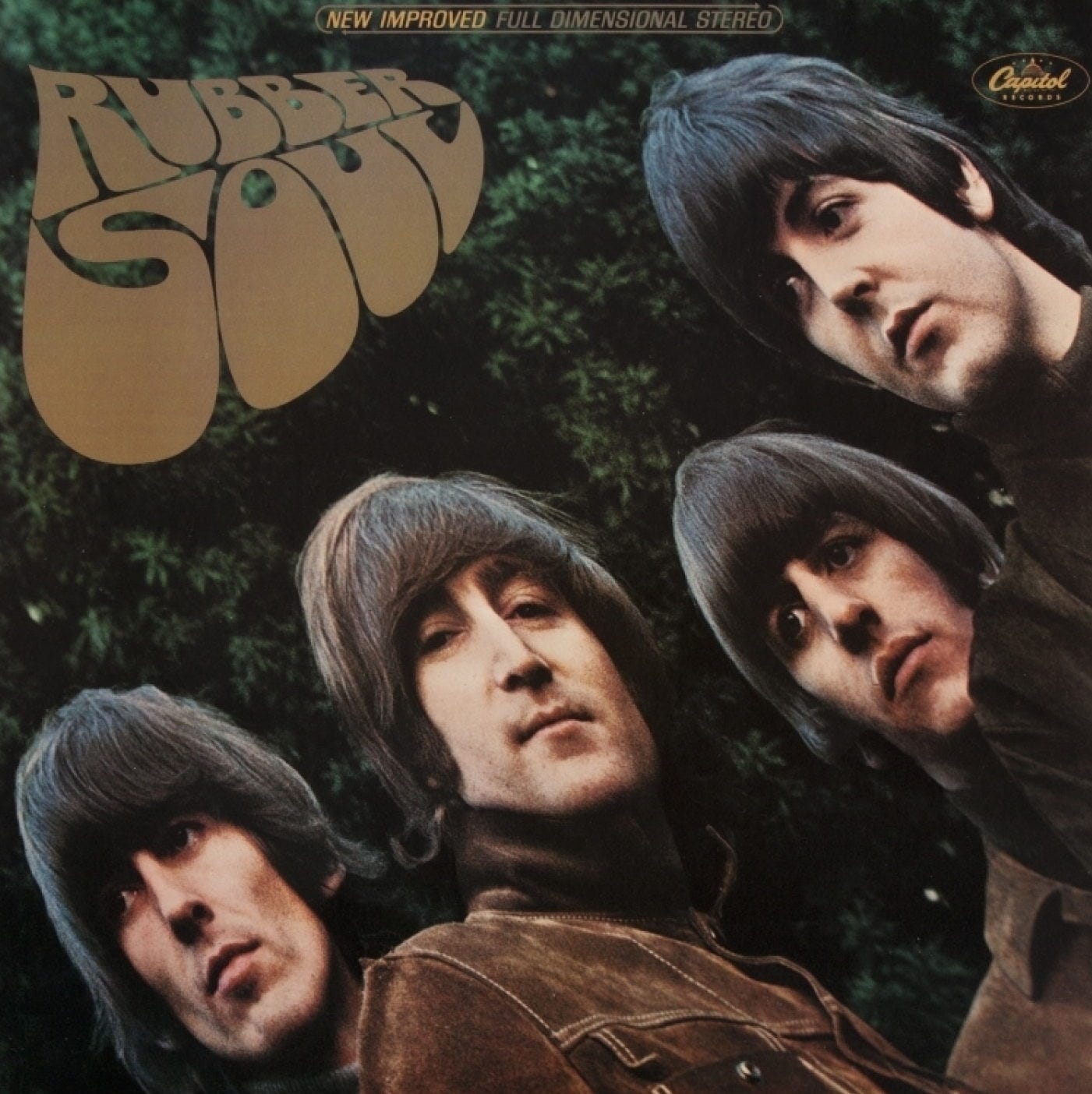"Rubber Soul" by The Beatles
"Rubber Soul" marks a pivotal moment in The Beatles' evolution from pop stars to serious musicians.
"Rubber Soul" by The Beatles
Release Date: December 3, 1965 (UK), December 6, 1965 (US)
Recording Location: EMI Studios, Abbey Road, London
Producer: George Martin
Historical Context:
"Rubber Soul" marks a pivotal moment in The Beatles' evolution from pop stars to serious musicians. Released in December 1965, the album came after the band had completed a major North American tour, which included their historic performance at Shea Stadium. Influenced by their exposure to American soul music, Bob Dylan, and the burgeoning folk rock movement, "Rubber Soul" showcased a sophisticated and mature sound. The album's title is a play on the phrase "plastic soul," a term used by African-American musicians to describe Mick Jagger's attempts at soul singing. This was the first Beatles album recorded during a period free from concert, film, or radio commitments, allowing the band to focus entirely on the music.
You can listen to this album on YouTube.
Musicians:
- John Lennon: Vocals, Rhythm Guitar
- Paul McCartney: Vocals, Bass Guitar
- George Harrison: Lead Guitar, Sitar, Vocals
- Ringo Starr: Drums, Percussion, Vocals
- Additional Musicians: George Martin (Piano), Mal Evans (Harmonium).
Track Listing and Descriptions:
Side One:
1. "Drive My Car" – An upbeat, R&B-influenced track featuring a catchy guitar riff and humorous lyrics about an aspiring starlet and her driver.
2. "Norwegian Wood (This Bird Has Flown)" – A folk-influenced song featuring George Harrison's sitar, it tells the story of a fleeting romance with introspective lyrics.
3. "You Won't See Me" – Paul McCartney's response to a strained relationship with Jane Asher, characterized by a soulful chord progression and prominent bass line.
4. "Nowhere Man" – John Lennon's introspective song about feeling lost and directionless, notable for its rich harmonies and philosophical lyrics.
5. "Think for Yourself" – George Harrison's cautionary message about independent thinking, featuring a distinctive fuzz bass played by McCartney.
6. "The Word" – A Lennon-McCartney collaboration that celebrates the concept of love, hinting at the psychedelic themes they would explore further in later albums.
7. "Michelle" – A tender ballad by McCartney with French-inspired lyrics and melody, blending folk and pop elements【85†source】【87†source】【88†source】.
Side Two:
1. "What Goes On" – A country-tinged song featuring Ringo Starr on lead vocals and co-writing credits, exploring themes of romantic discord.
2. "Girl" – Lennon's reflective song questioning religious and societal norms, with a memorable acoustic arrangement and playful backing vocals.
3. "I'm Looking Through You" – McCartney's account of romantic frustration, featuring sharp lyrics and dynamic organ playing by Starr.
4. "In My Life" – A nostalgic and deeply personal song by Lennon, celebrated for its introspective lyrics and the Baroque-style piano solo by George Martin.
5. "Wait" – A song originally recorded for the "Help!" sessions, revisited to complete "Rubber Soul," featuring dual lead vocals and rich harmonies.
6. "If I Needed Someone" – Harrison's jangly, Byrds-influenced track, blending folk rock elements with a straightforward declaration of love.
7. "Run for Your Life" – A Lennon song with a darker edge, featuring a rockabilly-inspired arrangement and candid lyrics about possessiveness.
"Rubber Soul" represents a significant step in The Beatles' artistic journey, combining their pop sensibilities with deeper, more complex themes and innovative instrumentation. The album's impact on contemporary music was profound, influencing countless artists and helping to elevate the status of the LP as a cohesive artistic statement rather than just a collection of singles.

